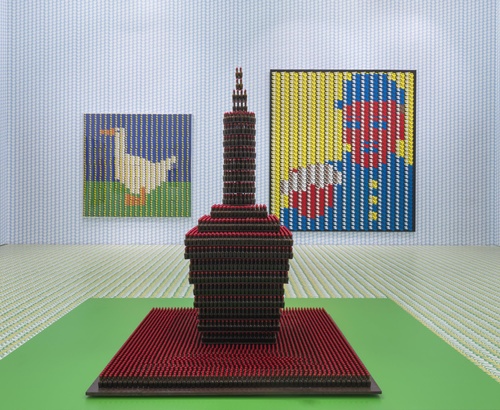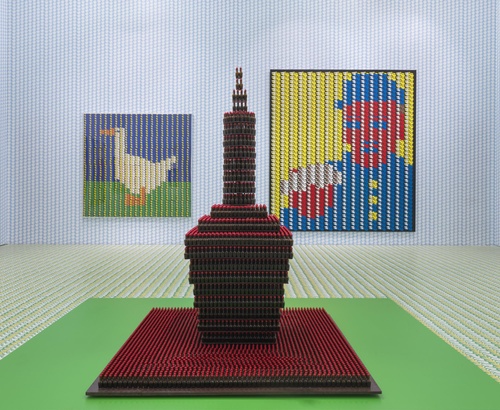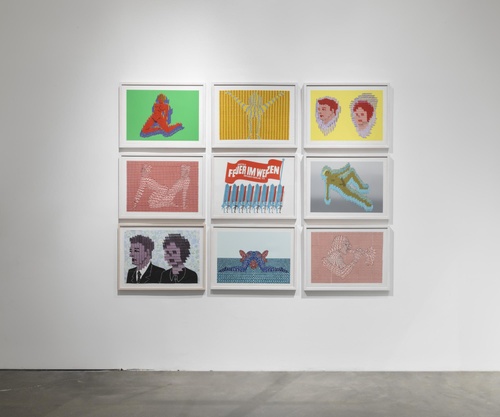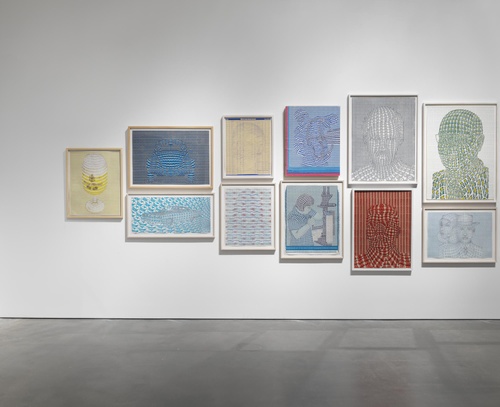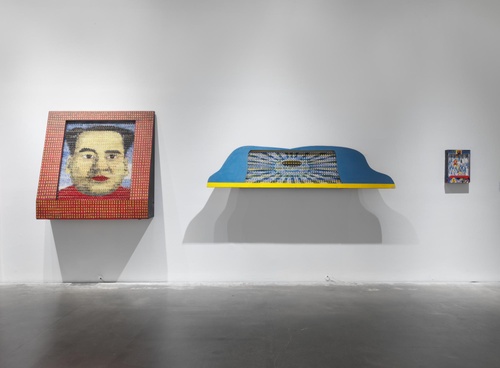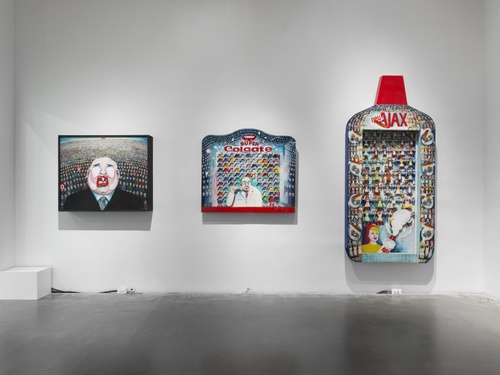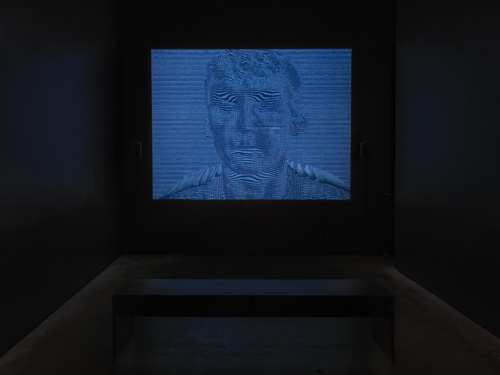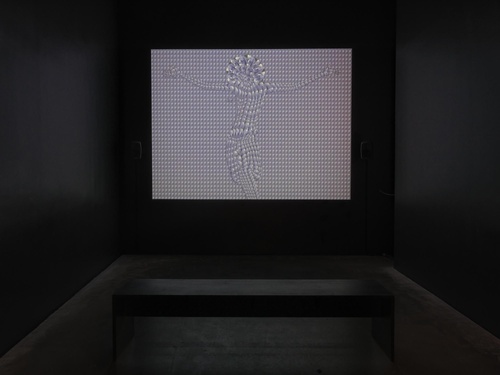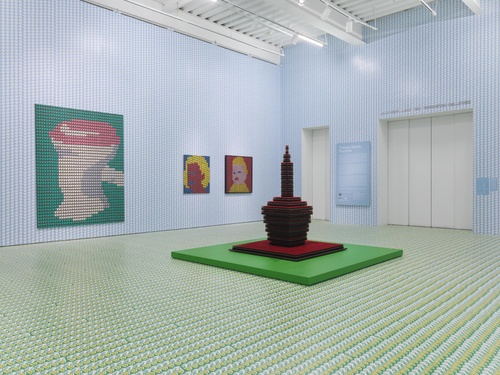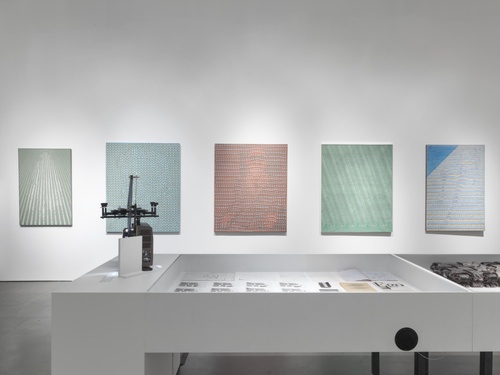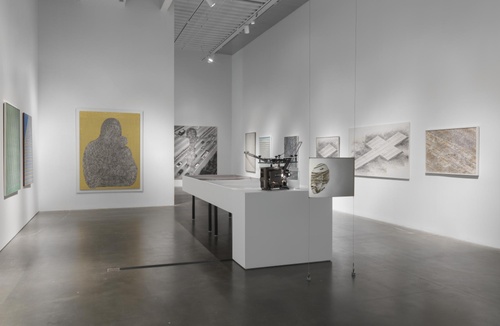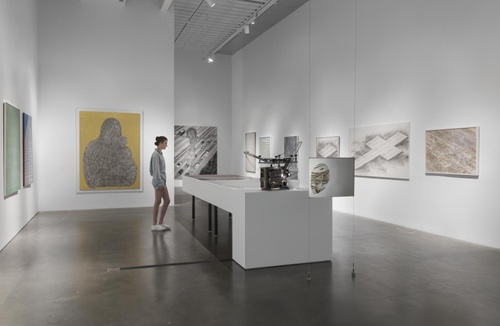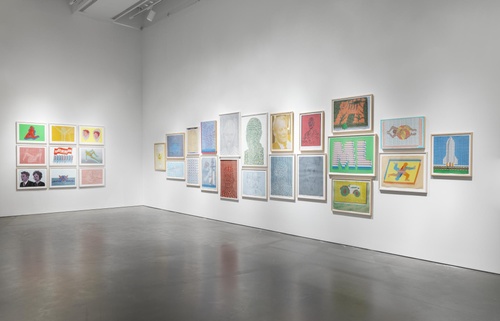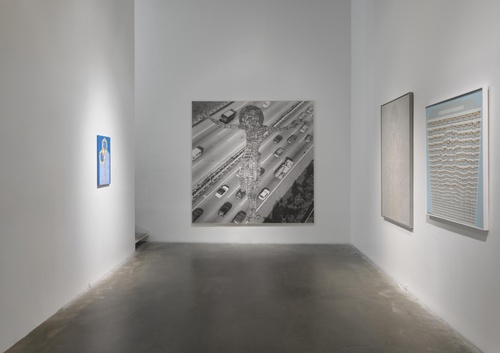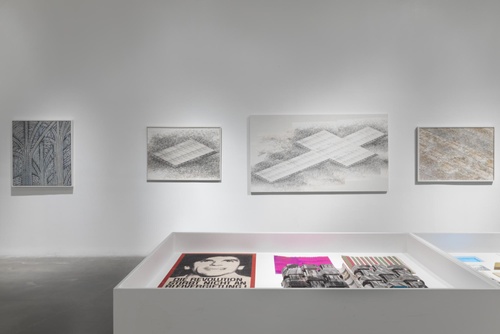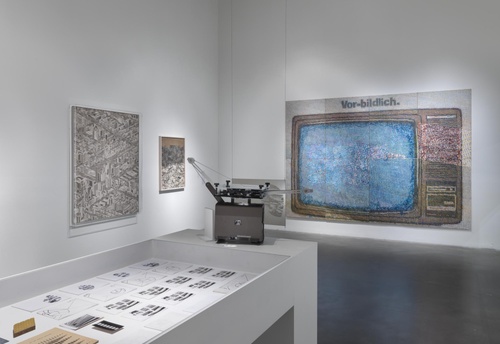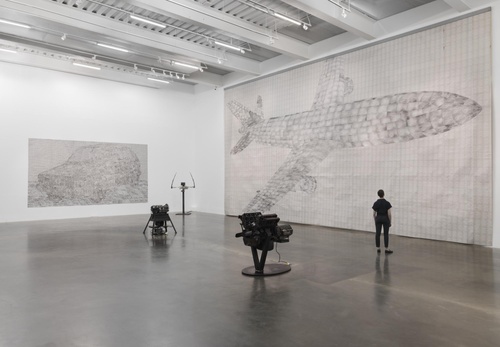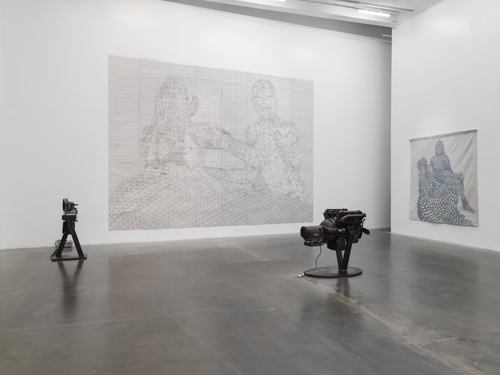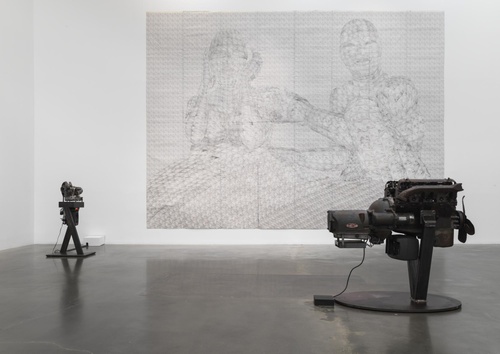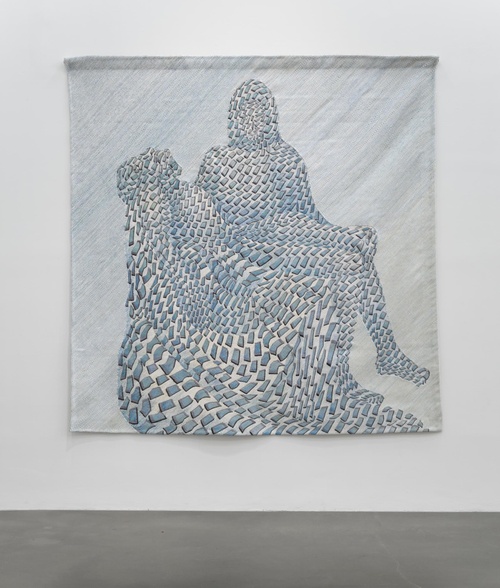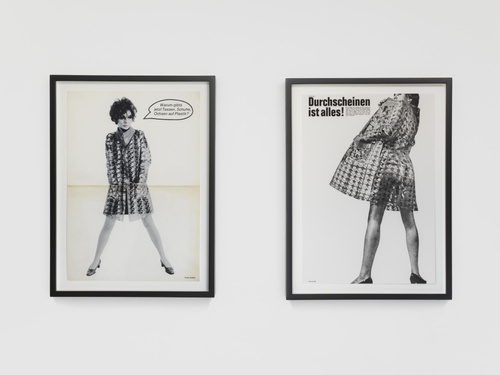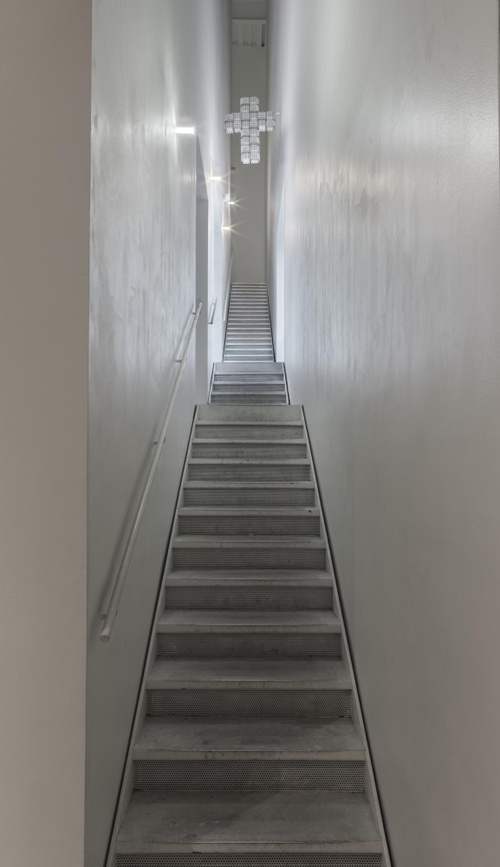Thomas Bayrle: Playtime
Thomas Bayrle: Playtime
The New Museum presented a major retrospective exhibition of the works of Thomas Bayrle (b. 1937, Berlin, Germany). This solo exhibition—Bayrle’s first major New York museum survey—brought together works from the last fifty years, highlighting Bayrle’s experiments across media and their prescient commentary on the relationship between consumerism, technology, propaganda, and desire.
One of the most important artists to have emerged during the 1960s West German economic boom, Bayrle has received belated recognition for his influential works and processes. Long before the advent of current visual technologies, he foresaw our digital reality, employing photocopy machines and other midcentury tools in his early works to create analog visualizations of what are now fundamental traits of our digital culture. Bayrle’s thematic investigations have ranged from a visual analysis of mass culture and consumerism to reflections on the intersection of technology with global politics.
Presented on the third and fourth floors of the Museum, this comprehensive survey brought together over 115 works, including paintings, sculptures, drawings, wallpapers and prints, early computer-based art, videos, and 16mm films. The exhibition presented selections from Bayrle’s most iconic series, including several of his rarely exhibited “painted machines”—hand-painted kinetic works inspired by images of Chinese pageants and other mass demonstrations. Bayrle created these works during a period when he was working simultaneously in corporate advertising and for Germany’s student protest movement. In his words, he “mixed communist and capitalist patterns without qualm, simply under the aspect of accumulation.” This logic of accumulation would lead to the development of Bayrle’s “super-forms,” densely composed images in which smaller units are used to build larger figurative forms. These works, several of which were on view in the exhibition, take the form of silkscreen prints depicting a variety of figures and objects from consumer culture. The exhibition also highlighted how the artist has expanded these serial patterns beyond traditional artworks into textiles, wallpaper, carpeting, and garments.
Bayrle’s work has also looked at the proliferation and uniformity of the global mega-city and its infrastructure networks. The show brought together a number of works created by Bayrle starting in the 1970s that model anonymous grids of city blocks and highways—works he initially envisioned while working as a jacquard weaver and staring into the hypnotic patterns of the thread crossings. Also during this period, Bayrle began to directly address the seductive nature of technology by creating paintings, paper assemblages, and kinetic sculptures that adopt the language of religious icon and symbols. Over the past several decades, his working methods have expanded to incorporate the sort of digital technologies his earliest work anticipated. He was one of the first artists to experiment with computers, and this presentation explores his innovations across a variety of media including paintings, films, and tapestries.
The fourth floor of the exhibition featured a number of large-scale works by Bayrle, including his monumental Flugzeug (Airplane) (1984), presented alongside his recent kinetic sculptures made of repurposed automobile parts repeatedly reciting the rosary, as in his much-celebrated inclusion in dOCUMENTA 13 (2012). The five decades’ worth of work in the exhibition demonstrates the critical prescience of Bayrle’s output and the profound influence he has had on younger artists working around the world today.
The exhibition was curated by Massimiliano Gioni, Edlis Neeson Artistic Director; Gary Carrion-Murayari, Kraus Family Curator; and Helga Christoffersen, Associate Curator. The exhibition was accompanied by a fully illustrated catalog published by Phaidon, with contributions from Kerstin Brätsch, Mark Godfrey, Alex Kitnick, Oliver Laric, and Christine Mehring, as well as a new interview between the artist and Massimiliano Gioni.
Thomas Bayrle was born in Berlin, Germany, in 1937, and lives and works in Frankfurt. Bayrle was professor at the Städelschule from 1975 to 2005. His work has been shown in some of the world’s most important exhibitions, including documenta 3, 6, and 13 in Kassel, Germany (1964, 1977, 2012), the 8th Busan Biennial (2012), the 6th and 8th Gwangju Biennials (2006, 2010), the 50th and 53rd Venice Biennales (2003, 2009), the 16th Sydney Biennial (2008), the Tbilisi Triennial (2007), the 4th Berlin Biennal (2006), and the 2nd Guangzhou Triennial (2005). He has been the subject of major solo exhibitions at MAK – Austrian Museum of Applied Arts / Contemporary Art, Vienna (2017); Institute of Contemporary Art, Miami (2016); Lenbachhaus, Munich (2016); Institut d’art contemporain, Villeurbanne / Rhône-Alpes, France (2014); WIELS, Brussels (2013); Madre – Museo d’Arte Contemporanea Donna Regina, Naples (2013); Baltic Centre for Contemporary Art, Gateshead, UK (2013); Museu d’Art Contemporani de Barcelona (2009); Musée d’art Moderne et Contemporain, Geneva (2009); Museum Ludwig, Cologne (2008); and Museu für Moderne Kunst, Frankfurt (2006). Bayrle has received several awards and prizes, including the Cologne Art Prize (2000) and the Prix Arts Electronica, Linz (1995).



